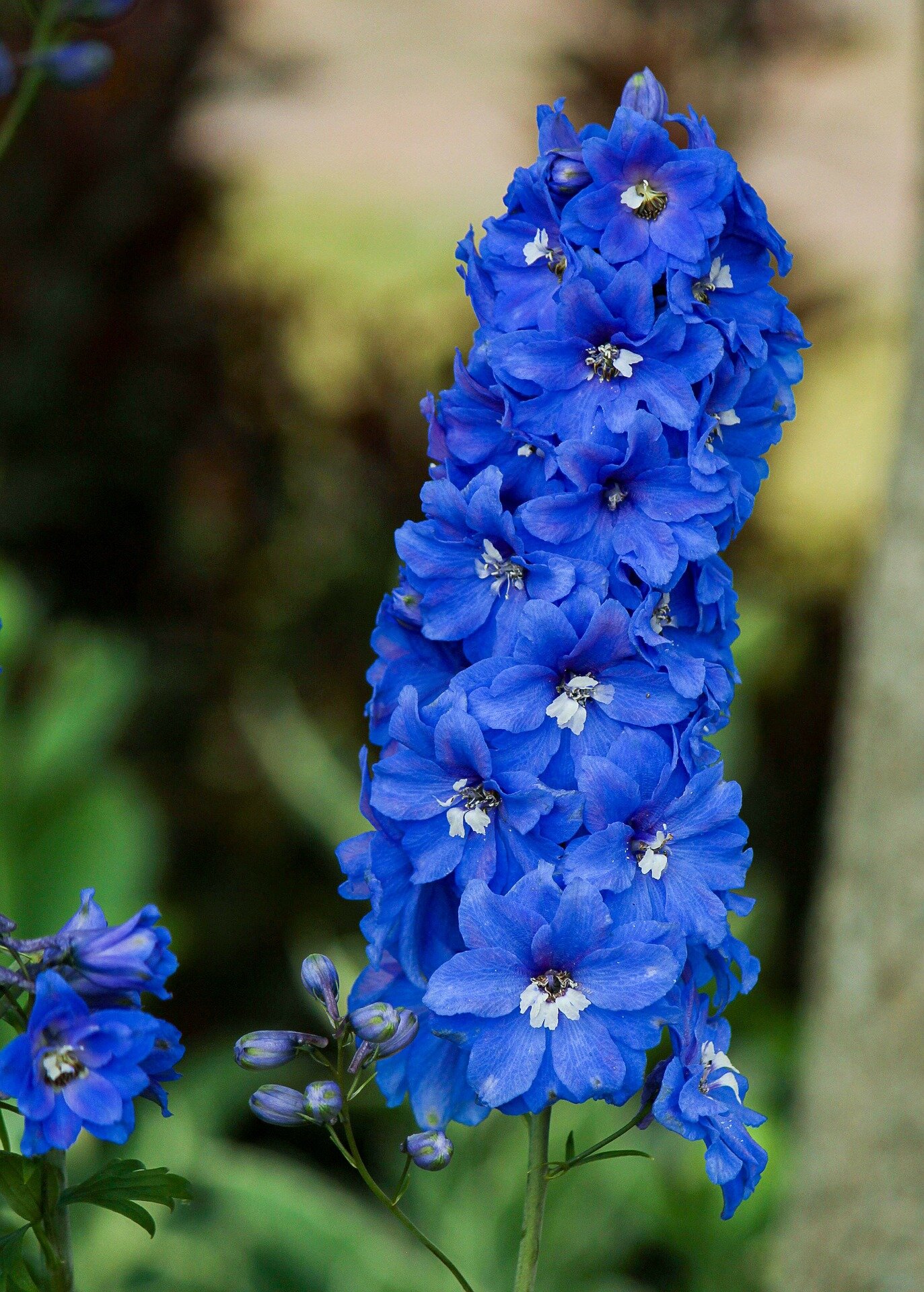Delphiniums
Delphiniums are one of the most unmistakable plants in the garden with their typical large colorful flower spikes towering over other plants, like a well dressed sentinel watching over everything, they can’t help but put a smile on anyone’s face.
Delphiniums are in the family Ranunculaceae which is the buttercup family where there about 300 species, with the majority being perennial, but there are biennial, and annual as well.
Delphiniums are an alpine plant, they are tough hardy perennials that can withstand cold temperatures the colder the better, and are perennial in USDA growing zones 3-7. If you do try to grow delphiniums outside these zones treat it as an annual.
Plant your delphinium in good soil, in full sun however they will tolerate some shade ( I have some on a north facing slope they grow well, but are a bit leggy) also; they like moist, but well drained soil, they don’t like to sit in water or what we call winter wet. If they sit in water what will happen the roots and crown will rot and you’ll lose your delphinium. I have lost many delphinium’s this way before I knew any better, you can also lose them due to a lack of water, which was another hard lesson.
Delphiniums can range in height from 4-8 feet tall and 1.5 -3 feet wide so keep that in mind when selecting a place in your garden or when choosing a pot.
It is very important to stake these plants before flowering, don’t tie the flower spikes to the stake because it increases the chance of the flower spike splitting the crown. What I typically use three 5 foot bamboo canes with twine, and put them in roughly in the shape of a triangle around the plant and tie string around the stakes which allows the flower spikes to move freely. 4x4 netting in the place of twine fastened with twist ties work well also.
Coming in a wide range of colors and shades of blue, pink, white, cream, purple, and multicolored with the majority of the flowers being semi-double; flowering takes place around June-July, and takes about three weeks for the whole spike to completely flower; the florets themselves look just as good as the flowers. After the main spike has flowered you can cut it down just above the laterals which flower after the main spike. After flowering cut them down to about an inch from the ground, and give them a feed of a good liquid fertilizer here we use tomato food, and usually by September or October you should get another second flowering. At the end of the season cut the plant right down to the ground, and you don’t have to, but what we recommend is put a light covering of sharp sand or grit (pea gravel works well) over the plant.
Come spring your going to want to feed your delphiniums again we use tomato food don’t use a food high in nitrogen it will make the stalks weak. Also in the spring on an old or young plant you’ll see new shoots coming up they are all potential flowers. There may be as many as 30 new shoots so what you’re going to want to do is thin them. Thinning them gives you better flower spikes, and improves air circulation through the plant which helps to prevent pests or diseases. Leave the thicker stems. On a young plant leave three stems, but as the plant continues to get older you can keep 5,7 or 9 stems doing this will keep your plant healthy and give you better flower spikes.
Delphiniums are an easy plant to grow when you understand them, and although this plants beauty is fleeting you will not regret adding it to your garden.


